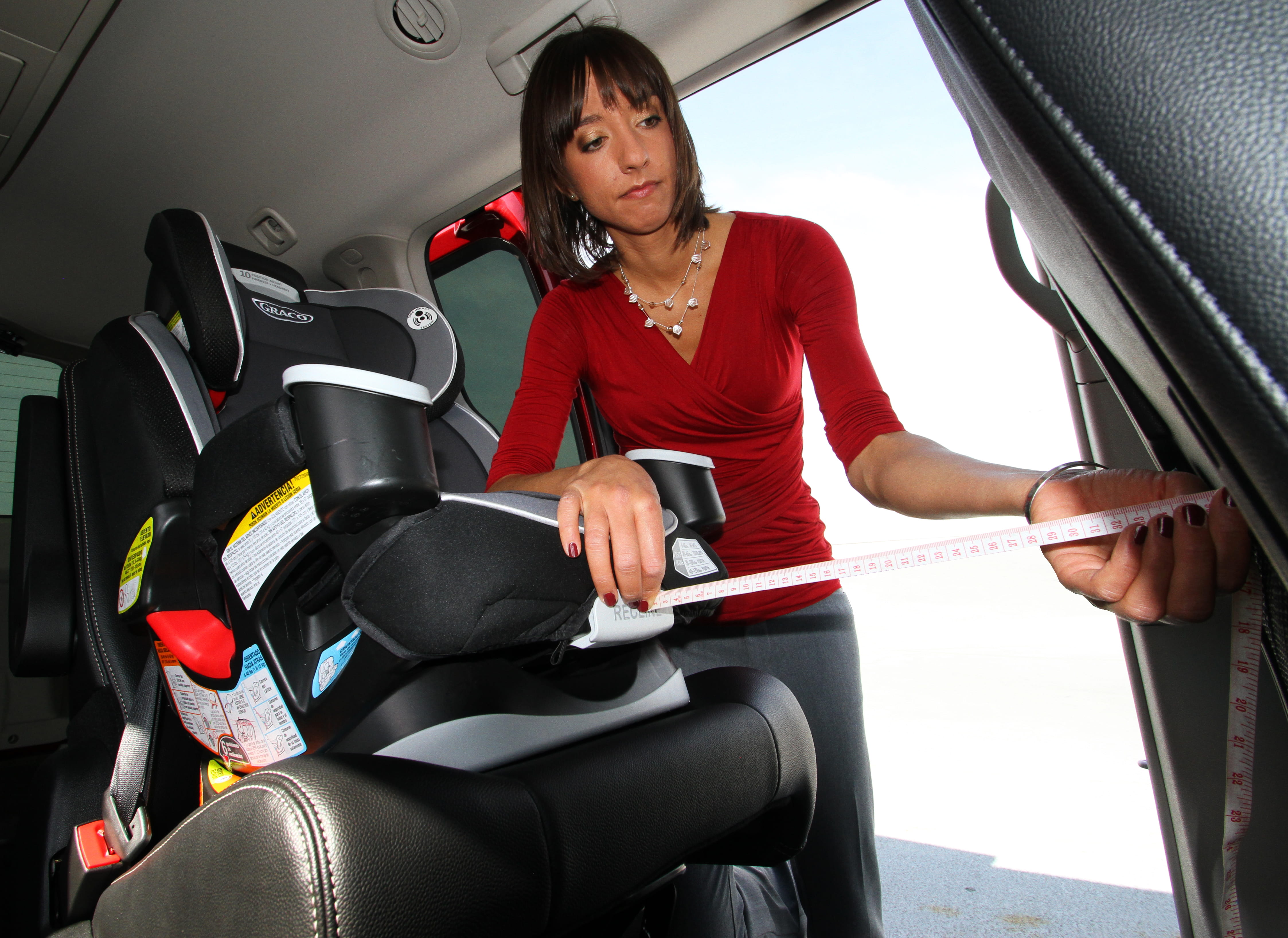August 31, 2015
 COLUMBUS, Ohio – Many parents roll up towels and blankets and use pool noodles just to get their child’s car seat to fit better in their car. This common practice creates extra steps for parents and can make proper installation more difficult.
COLUMBUS, Ohio – Many parents roll up towels and blankets and use pool noodles just to get their child’s car seat to fit better in their car. This common practice creates extra steps for parents and can make proper installation more difficult.It turns out child car seats and vehicle seats don’t align properly more than 40 percent of the time, according to a new study.
In an effort to improve child car seats’ fit and position in vehicles, a team of researchers from The Ohio State University College of Medicine collected dimension samples from 61 vehicles and 59 child car seats currently on the market and identified the most common sources of incompatibility.
Data from nearly 3,600 potential child car seat-vehicle combinations and 34 physical installations were analyzed. The results, which will be published in the journal Traffic Injury Prevention in early October, showed less than 60 percent of rear-facing child car seat-vehicle combinations fit properly between the vehicle’s seat pan angle and the child car seat manufacturer’s required base angle.
“I want to emphasize that all car seats are safe and have passed federal regulations. But, to really optimize the safety of a child’s car seat and provide the best protection for the child, one must make sure it fits properly in the vehicle,” said Julie Bing, lead author of the study and research engineer at Ohio State College of Medicine’s Injury Biomechanics Research Center.
Researchers found: the width of the base of child car seats fit snugly between the vehicle’s seat pan bolsters in more than 63 percent of rear-facing child car seat-vehicle combinations and in more than 62 percent of forward-facing child car seat-vehicle combinations; forward-facing child car seats didn’t bump up against vehicle’s headrests in more than 66 percent of the combinations; and compatibility rates of the length of the child car seat base compared to the length of the vehicle seat pan and the ability of the top tether to reach the tether anchor exceeded 98 percent.
“We want to encourage parents to take measurements of their car in order to make the most informed decision when choosing the safest car seat option for their child,” Bing said.
Another goal of the study is to share the specific data points and assist with communication between child car seat and vehicle manufacturers so they can more fully understand compatibility of their products and, ultimately, help improve individual designs, Bing said.
Bing urges parents to make sure angles of the vehicle’s seat and of the child car seat align and there’s no excessive interference with the vehicle’s headrest and the child’s car seat.
“We recommend parents go to the store and ask if they can take the model off the shelf and go out to their car and try it. It might look great on the shelf and have all the greatest safety ratings but, if it doesn’t fit in your vehicle, it may not be the best option for you,” Bing said.
Funding from The National Science Foundation Center for Child Injury Prevention Studies (CChIPS) supported this research. CChIPS is a collaboration of researchers from The Ohio State University, The Children’s Hospital of Philadelphia and the University of Pennsylvania, and industry members who conduct translational research focusing on child injury prevention.
###
Contact: Sherri Kirk, Wexner Medical Center Public Affairs and Media Relations, 614-293-3737, or Sherri.Kirk@osumc.edu.

